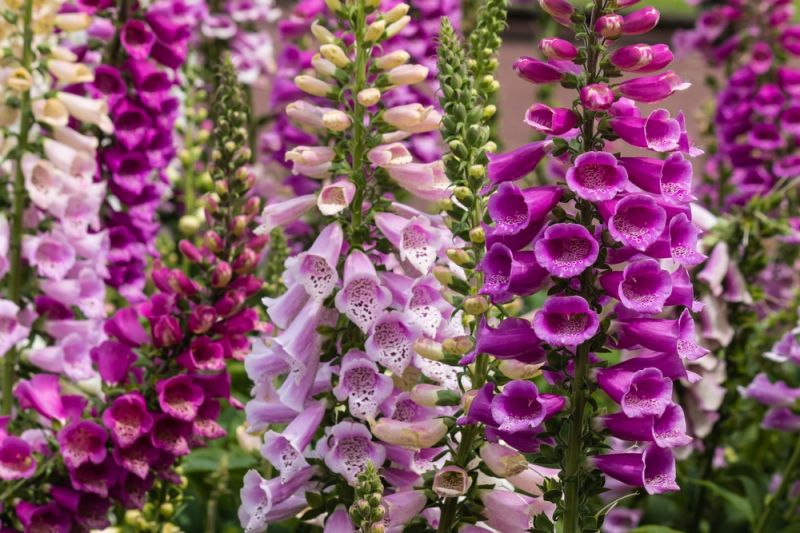
With their tall, elegant spires of purple or white flowers, foxgloves bring shady borders to life in early summer. The foxglove is one of those wildflowers that has made itself at home in our gardens, and it’s easy to see why. Loved by pollinators, especially bumblebees, this low-maintenance beauty will self-seed gently around your garden, creating an aura of cottage garden charm.
All About Foxgloves
Most foxgloves are biennial, producing a rosette of leaves in their first year followed by a tall flower spire in their second, then setting seed and dying. Shake a dried foxglove flower spire, and thousands of tiny black seeds will scatter everywhere, self-seeding wherever growing conditions are right.
Most of the foxgloves you’ll find in gardens today were bred from our native foxglove Digitalis purpurea, a woodland plant, so they do best in dappled shade and moist, well-drained soil. For sunny gardens and drier soils, perennial foxgloves like Digitalis obscura and Digitalis parviflora are better choices. These species come from southern Spain and the Mediterranean.
Although foxgloves are beautiful, it’s important to remember that they’re also poisonous. Always wash your hands after working with foxgloves – for example, if cutting flowers for the house – and don’t grow them if you have pets that eat plants.
Growing Foxgloves from Seed
Foxgloves grow quickly from seed, and the simplest way is simply to scatter the seed directly where you want plants to grow. Do this in late summer, so that the young seedlings have time to harden before winter arrives. You can also sow seed in autumn or early spring in trays filled with multipurpose compost. Here’s how it’s done:
- Scatter the seeds over the compost and press down lightly, but don’t cover over with compost, as the seeds need light to germinate.
- Water the trays and place them in a frost-free greenhouse or on a sunny windowsill.
- Once the seedlings have germinated, prick them out and pot on into individual 9cm pots.
- Plant out in spring once all risk of frost is past. Space plants at least 30cm (12in) apart, as they won’t grow tall if overcrowded.
- Unless you’re growing perennial foxgloves, you’ll need to plant or sow foxgloves two years in a row to have plants flowering each year.
How to Care for Foxgloves
The most important part of caring for foxgloves is to give them the right environment to grow in. For the best results, follow these tips:
- Protect the young plants from slugs and snails in spring.
- Deadhead after flowering for a second flush of flowers in late summer, but leave a few flower spires to stand and set seed.
- Once biennial foxgloves have flowered and died, pull them up.
- Cut perennial foxgloves back to ground level once they have finished flowering, and mulch the plants with compost in spring.
Whether it’s seeds, plants, or gardening essentials you’re looking for, you’ll find them in our centre. We’re always happy to help with all your gardening queries!



